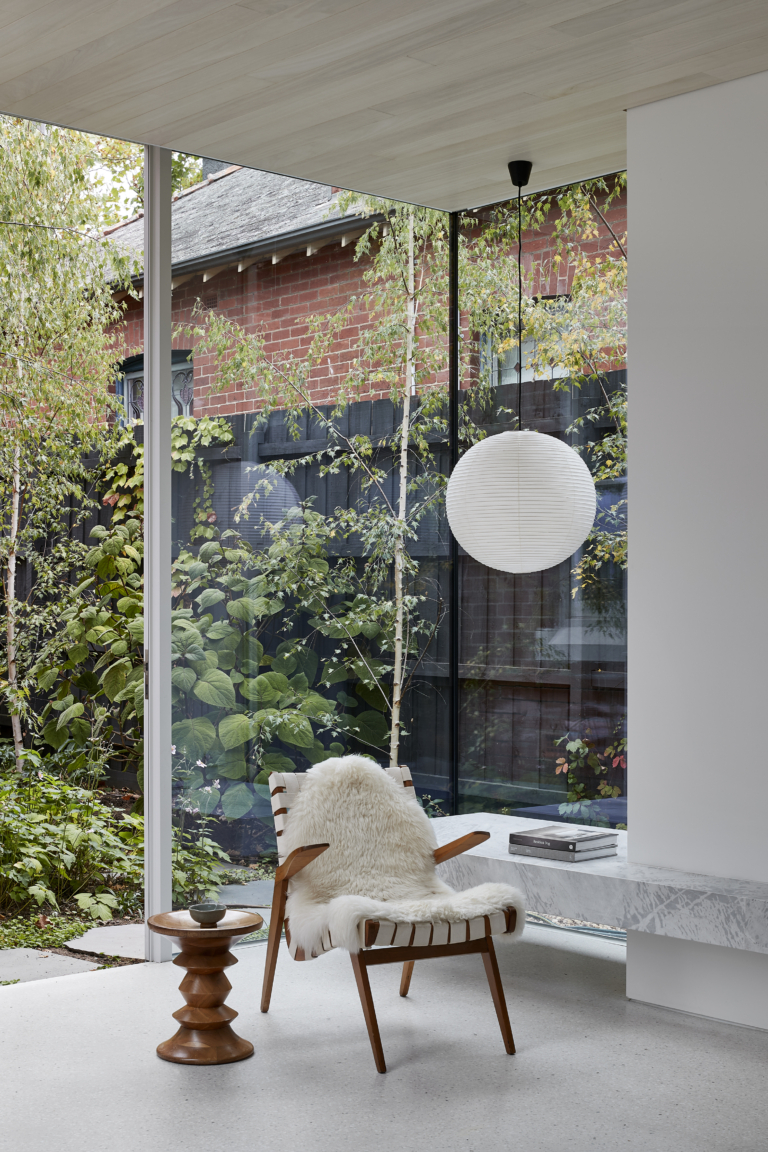
Considered Urban Vernacular – City House by Chris Tate Architecture
Playing with the duality of its city frontage and its purposely planted native rainforest to the rear, City House offers food for thought as an example of a considered urban vernacular. Chris Tate Architecture carves a unique native retreat in densely populated Auckland.
Sitting behind its thin-slatted dark-stained timber screen, City House is one of surprisingly contrasts, combining the home’s anticipated frontage of privacy and identity, with the purposely planted rainforest of native plants to the rear. Occupying half of the small site, the rear garden offers an element of respite from the densely populated location, designed as a retreat from the elements and filled with native vegetation to engage birdlife and natural seed transfer in the process. Challenging the expected, where the expected response within an urban environment is to optimise and capture as much sellable real estate as possible, City House offers itself as a home of principle and an expression of its owner’s values.
Located in Auckland, the home is located in one of the most populated areas of the CBD. Privacy was key, and the timber screen elements allow the home’s frontage to have movement and texture and ensure interiors receive reactive light throughout the day and access to the changing conditions across the seasons. Defining both the external and interior, the screen is a key feature, allowing the deck to be secured and private. It also acts as a portal of sorts, transitioning across it, allows a step (literal and metaphysical) out of that busy urban realm.
A home for two people, City House is spread across three internal levels. The ground floor houses the garage and storage areas, with the first floor housing the kitchen, living and dining areas, and on the mezzanine sits the office that can also function as a bedroom space. The importance for rooms to be transformable was key. Internally, half of the home is open void, while the other more passive areas are able to be closed off from the rest of the zones. Elements such as the long linear kitchen, which runs the full length of the northern wall, act as a contrast to the verticality of the home, creating a balance.
City House is a shell of sorts, allowing its owners to transform and mould the zones to suit how they want to live, work or entertain. The clever integration of such a vital living element to the site (the natural rainforest to the rear) shows an acute awareness of the need for such a retreat to make a home, to counterbalance its location. Chris Tate Architecture emphasises the natural and the sensible to rethink the traditional approach to the inner urban living condition.














